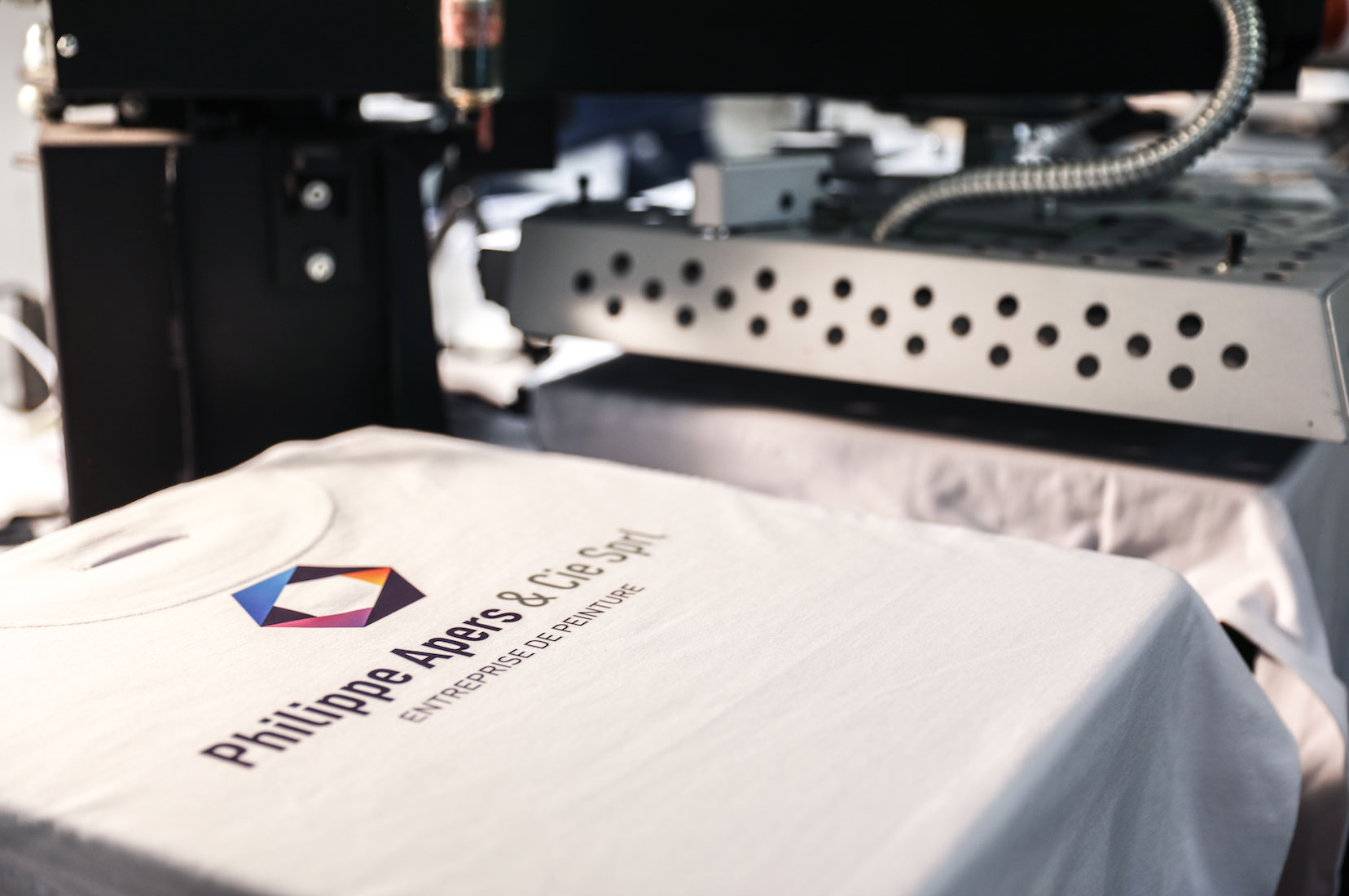When you want to personalize textiles, several printing techniques are available to you:
Screen printing
Screen printing is one of the best known, oldest and most widely used printing techniques by businesses to print designs on different sized products made from various materials. Ink passes through a sieve or stencil to be deposited directly on the textile and is then dried at high temperature ensuring optimum resistance to washing. Colors are printed one after the other up to a maximum of 12 colors.
Screen printing transfert
Screen transfer printing is performed as explained above but in this case on special paper with a layer of glue. The paper is placed on the textile and the ink is heat transferred to the textile using a professional press at high pressure and high temperature.
Flex printing
It is a printing process whereby the design is cut with a digital cutter from a colored vinyl sheet and hot pressed onto the desired product. In this case, only visuals with only one color and without too fine detail are feasible.
Digital printing
Also called DTG Direct To Garment, this is the most recent technique, it consists of placing the garment to be personalized directly in a high definition printer where the ink is projected there, just like on paper.
Sublimation
Sublimation printing uses heat sensitive ink. The ink is first printed on transfer paper, which is then placed on the textile. A heat press (calender) transfers the ink from the paper to the textile by the action of heat and pressure. It is important to know that a sublimation printer can only be used to print on polyester. Cotton is not heat resistant and could therefore shrink or burn.
We still recommend that you use our advice to discuss together the printing technique best suited to your needs.







